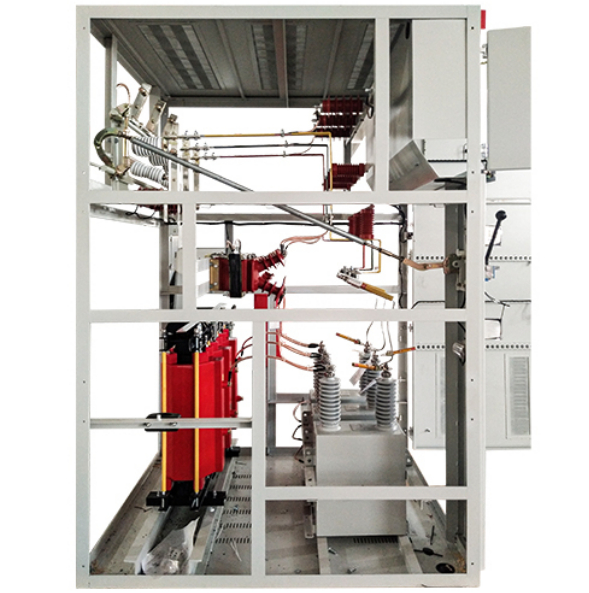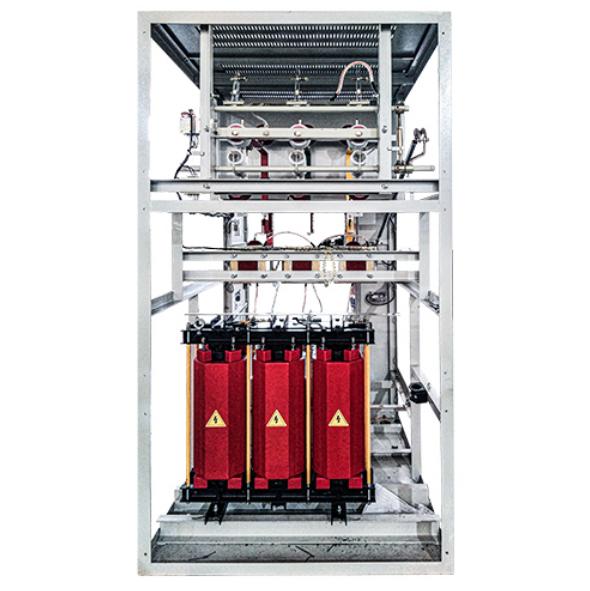Delving into Reactive Power Compensation: Benefits of Techniques
Introduction to Reactive Power Compensation
Have you ever wondered why some electrical systems seem to waste energy despite operating efficiently? The answer often lies in the concept of reactive power. Reactive power is the “imaginary” component of electricity that doesn’t do any actual work but is essential for maintaining voltage levels in power systems. Without proper management of reactive power, electrical systems can suffer from inefficiencies, leading to increased operational costs. This is where reactive power compensation comes into play, utilizing devices like the WT-TBB reactive power compensation cabinet to optimize power quality and efficiency.

What is a Reactive Power Compensation Cabinet?
A reactive power compensation cabinet, also known as a shunt capacitor bank, is a crucial device in electrical power systems. It is designed to improve power factor and voltage stability by compensating for reactive power. This cabinet works by adjusting the flow of reactive power, ensuring that it is in balance with the active power used by the loads. This balance is vital for maintaining system stability and efficiency, especially in industrial applications where power demand can fluctuate significantly.
The Role of Reactive Power in Electrical Systems
Reactive power is necessary for creating magnetic fields in inductive loads such as motors and transformers. However, if not managed correctly, it can lead to voltage drops and energy losses. By introducing reactive power compensation, systems can maintain higher voltage levels, improving overall performance. This leads to more efficient energy usage and reduced costs, allowing businesses to operate more effectively.
Components of the WT-TBB Reactive Power Compensation Cabinet
The WT-TBB compensation device incorporates advanced contactor static switching technology that has proven its reliability over decades. With essential components designed for ease of maintenance, this cabinet stands out as a dependable solution in various applications. It’s not only about maintaining efficiency but also about ensuring that these systems remain operational with minimal downtime.
Advantages of Reactive Power Compensation
Robustness and Reliability
One of the standout features of the WT-TBB reactive power compensation cabinet is its robustness and reliability. Utilizing time-tested technology, it ensures stable performance even in fluctuating operational conditions. This reliability is crucial in industries where power quality can directly impact production and operational efficiency. When systems can rely on consistent reactive power management, businesses can focus on their core activities without the worry of unexpected electrical issues.

Cost-Effectiveness
Another significant advantage of the WT-TBB compensation device is its cost-effectiveness. For industries facing moderate fluctuations in reactive power demand, this cabinet provides an excellent cost-to-performance ratio. It addresses the need for improved power factor without straining budgets, making it an attractive option for many companies. By enhancing the power factor, businesses can also lower their electricity bills, as utility companies often charge penalties for poor power factor performance.
Simplicity and Maintenance
The modular design of the WT-TBB compensation device allows for easy disassembly and inspection. This simplicity facilitates maintenance, enabling technicians to troubleshoot and repair issues quickly. By minimizing downtime, companies can maintain higher productivity levels. The straightforward design also means that less specialized knowledge is required for maintenance, further streamlining operations.
Line Voltage Enhancement
How It Works
The WT-TBB compensation device not only improves power factor but also enhances line voltage. By compensating for reactive power, it stabilizes and raises the system voltage, which reduces line voltage drops. This is particularly beneficial in industries where consistent voltage is necessary for the optimal performance of sensitive equipment. The enhancement of line voltage contributes to overall power quality, which is a critical aspect of modern electrical systems.
Benefits of Improved Voltage Stability
Maintaining stable voltage levels has multiple benefits. For one, it ensures that machinery operates at its designed efficiency, reducing wear and tear. Additionally, improved voltage stability can prevent costly outages and equipment failures, thereby saving businesses money in repairs and lost productivity. Companies that invest in reactive power compensation can expect a more reliable power supply, fostering a more productive working environment.
Enhanced Power Quality and Efficiency
The multifaceted functionality of the WT-TBB device enhances overall power quality. Improved power quality translates to better performance from all electrical devices within a facility. This increased efficiency not only helps in operational terms but also contributes to environmental sustainability by reducing the overall energy footprint of the operation.
Technical Specifications of the WT-TBB Cabinet
Environmental Requirements
The WT-TBB reactive power compensation cabinet is designed to operate under a range of environmental conditions. It can function effectively in ambient temperatures from -35℃ to 55℃, with a relative humidity of no more than 90%. This broad operational range makes it suitable for various applications, whether indoor or outdoor. It is essential, however, to ensure that the installation site is free from explosive materials and corrosive gases to maintain the integrity of the device.
Key Technical Parameters
With rated voltages ranging from 6 to 35 kV and rated capacities from 100 to 20,000 kvar, the WT-TBB cabinet is versatile enough to meet diverse needs. Its wiring methods, including delta and star configurations, allow for flexible installation options tailored to specific applications. The protection mechanisms, such as low voltage and over-voltage protection, ensure that the system remains safe and operational under varying conditions.
Durability and Performance
The design of the WT-TBB cabinet takes into account wind speed and altitude, allowing it to withstand conditions of up to 35 m/s and altitudes of ≤2000 m. This durability makes it an ideal choice for industries operating in challenging environments. By ensuring that the cabinet can handle extreme conditions, businesses can trust that their reactive power compensation solution will perform reliably over time.
Conclusion
The Impact of Reactive Power Compensation on Industry
In conclusion, reactive power compensation is essential for optimizing electrical systems, especially in industrial settings. The WT-TBB reactive power compensation cabinet offers numerous advantages, from cost savings to enhanced voltage stability. As industries continue to evolve and demand more efficient energy solutions, investing in technologies that manage reactive power will be crucial for maintaining competitive advantage.
Why Choose Shanghai Wenlida Technology Co., Ltd.?
For businesses looking to implement reactive power compensation, choosing the right supplier is vital. Shanghai Wenlida Technology Co., Ltd. stands out as a leader in providing reliable and effective reactive power compensation solutions. With a commitment to quality and customer satisfaction, they are well-equipped to meet the unique needs of various industries.

Final Thoughts
As energy costs rise and environmental concerns grow, understanding and managing reactive power becomes increasingly important. By delving into the techniques and benefits of reactive power compensation, businesses can not only reduce costs but also enhance their overall operational efficiency, paving the way for a sustainable energy future.
